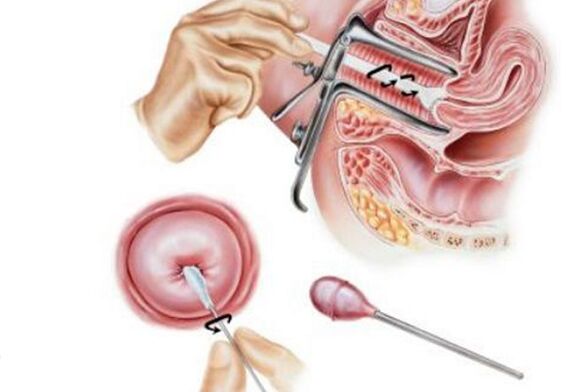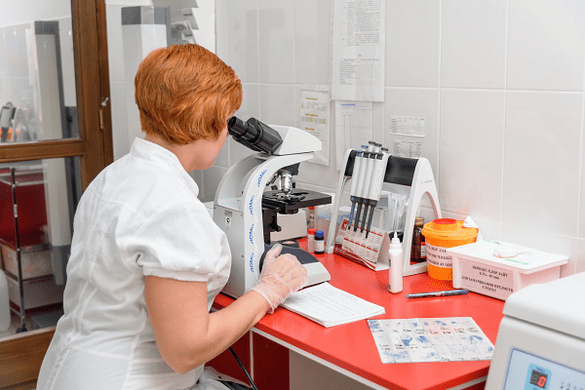If an analysis is required to identify HPV, there is nothing to worry about. Most procedures are completely painless, and some are quite comfortable for any patient. Review of the most common questions regarding the delivery of the test.
What is HPV?
Human papillomavirus is a microorganism that contains a cellular structure of DNA. When introduced into the human body, HPV DNA will cause mutations, leading to irreversible processes. Most of the population has carried the virus, but few realize this, as the virus does not manifest itself in any way.
As soon as the body weakens, the immune system weakens and tumors appear on the body. For all skin formations, except moles and acne, it is the HPV virus that affects. If the warts are not treated in time, malignancy occurs and a harmless wart can turn into cervical cancer in women and urethral cancer in men.
Why is the human papilloma virus dangerous?
When papillomas, genital warts or warts appear on the body, it is difficult for ordinary people to distinguish them from each other, mistaking them for something that is not capable of causing harm.
It's not that simple - a small papilloma can grow so large that it causes a lot of inconvenience - from cosmetic discomfort to the growth of cancerous tumors. More than 130 strains of the human papillomavirus are known, and each manifests itself in different ways.

The most common of them are types 16 and 18, which cause cancer of the mucous membranes, cervix, vagina, penis and other similar diseases. Since a person is initially unaware of the virus's presence in the body, the HPV virus gradually develops and after 5-10 years a person will see changes in his or her body in the form of growths.
Papilloma analysis can be done at any clinic. After 40 years, more than half of the lesions become malignant. Timely diagnosis gives a person the chance of a painless old age that is not overshadowed by cancer.
Why test for human papillomavirus?
To protect yourself from diseases that cause cancer, you should promptly identify a potential threat to life and health. With an extensive list of reasons for spread, HPV is spread from person to person through close contact - hugging, kissing, sex, using common hygiene products.
The virus takes root under the skin and destroys healthy DNA, causing mutations throughout the body. When immunity fails, the HPV virus appears on the skin as warts, papillomas, and similar rashes. Only testing can detect the virus in its early stages and prevent its further spread.
When to schedule an HPV test?

When the first signs of disease appear on the body, the doctor can see them even with a visual examination. The HPV test is ordered to find out where the virus comes from in the body, identify the type, and then clear it.
Even considering that not every person with a disease has the potential to become a cancer patient, no one wants to be tempted by fate, which means that it is necessary to carry out tests. If a woman plans to become pregnant, she must be tested for HPV, as the virus will easily enter the baby. The father should also not be indifferent, as he may be a carrier of the papillomavirus.
Features that pass HPV analysis
It is believed that detecting HPV before the age of 30 is uninformative, as the disease progresses far beyond the human eye. After age 30, the first tests indicated can detect papilloma virus even at its earliest stages.
The less time it takes from the time of infection, the more effective further treatment will be. It is important to determine the time when normal cells begin to develop into cancer. The methods of diagnosing human papillomavirus depend on several factors:
- Virus identification and the fact of its presence in the body
- Find diversity
- Assess the damage caused while the person did not seek medical help
- Prescribing high quality and effective treatment
Remember:The virus will never leave the host completely, because it already interacts with the cells of the body's DNA. HPV will stay calm until the immune defenses are weakened.
What type of analysis to deliver the detection of HPV?
- Colposcopy. HPV tests in women are done using this method. It is designed to detect genital warts. It is prescribed to women when genital warts are detected located in the cervical region.
- Cytology. A smear is taken, which contains epithelial cells, then the sample is examined under a microscope. If the cells are changed, there is a risk of developing the HPV virus. There is a risk of erroneous results.
- Histology. It is an adjunct to cytology to rule out an error. A small portion of the affected tissue is taken and the doctor assesses the difficulty of the placement through a microscope. With the help of histological examination it is possible to determine the nature of the formation.
- PCR diagnostics. The most honest way with 98% accuracy. Take a swab, urine, blood, or amniotic fluid
If at least one test indicates the presence of the virus, the patient is sent for additional analysis to ensure the accuracy of the results. If a result is found to be a false positive, the cause may be contaminated test material or a violation of generally accepted sampling technique.
Sometimes patients incorrectly prepare for the analysis or choose the wrong time for the procedure - these factors can also cause false results.
Test rules
In addition to relying on the attending physician, the patient himself must follow the analysis and understand the underlying procedures. The doctor is the expert, but the health belongs to the patient.
How are biomaterials made?
The strokes are done with a soft brush, which looks like a brush. In free clinics, a Volkmann spoon is sometimes used - it is a small spoon on a long stem. Such a brush is gently inserted into the canal, then removed by rotary movements. The brush was placed in a sterile vessel and sent for further study.
How to prepare for the procedure for women
2 days before the procedure, do not have sex, use antibacterial soap, douche, use tampons. If you have a Pap smear, you should not have sex, play sports, take very hot baths, swim in public, and take medications that affect the blood for 3 weeks after the procedure. washy.

How to prepare for the procedure for men
No sex, shower for 2 days without detergent. Do not urinate before the procedure.
General preparation for the procedure
It is necessary to inform the doctor about all medicines that have been used by a person in the last 2 months.
How is the HPV blood test done?
Used for PCR diagnostics. From the finger, sometimes from a vein, depending on the type of analysis the person will be doing. The slight tingling sensation caused by the injection is the maximum discomfort from the procedure. If the blood vessels in the elbow area are narrow, it will be difficult to draw blood, but your doctor will tell you how to properly widen the veins.
The procedure is carried out on an empty stomach, you can't even drink water. You should carry a bar of chocolate with you. 3 days before donating blood, it is necessary to exclude from the diet all allergenic foods.
What is the urine test like?
It is better to take care of the sterile vial yourself. You can buy it at the pharmacy. Collect morning urine in the vial on an empty stomach. Then take it to the test, preferably immediately, maximum time is 4 hours otherwise the results will be invalid. This method is not as accurate as drawing blood, but if you cannot donate blood you will have to use this method.

How long does HPV testing in women and men take?
If a cervical examination takes place, the results will be issued immediately. With cytology, results will be available in just one week. Histology is done in 3 days, after which you can get the test results on hand. With PCR diagnostics, you can get results immediately or wait up to 2 days.
When and how often should you get tested for HPV?
Until the age of 30, only people with obvious signs of growth on the body are examined. Usually at this age, the HPV virus is dormant and does not spread throughout the body.
From 30 to 60 years old, it is necessary to have regular check-ups every 3 years. Immunity levels are decreasing, so signs of human papillomavirus need to be detected promptly.
After 60 years, usually no exam is taken. If in the last two checks no virus was detected, there is no need to worry. If symptoms are present, treatment must be performed until the last 2 results are negative.
Cost and pricing for the provision of HPV tests
In the case of an acute illness or when a cancerous tumor is found, most screenings are free. They can be prescribed by an oncologist.
To get a complete picture of virus development, two methods are commonly used to eliminate the possibility of misinformation.
Decode the result
Decoding should only be performed by the attending physician. Patient intervention won't do any good. To understand what the result is, you should pay attention to the following words:
- reference value - No HPV;
- positive result - an oncogenic strain of HPV has been detected;
- the result is negative - no cancer is found, but other types of HPV are likely to be found.
If the patient decides to have a physical examination and detects the presence of the human papilloma virus in his body, then the above methods should be used. Timely diagnosis has saved millions of lives and helped regain a calm, healthy life. Only after passing thorough tests will it be possible to prescribe quality treatment.
Sometimes patients are sent for testing with no outward signs of disease, and the procedure shows that there is HPV in the body. In this case, the treatment will not take long. It is for this reason that doctors recommend seeking prompt help.














































































